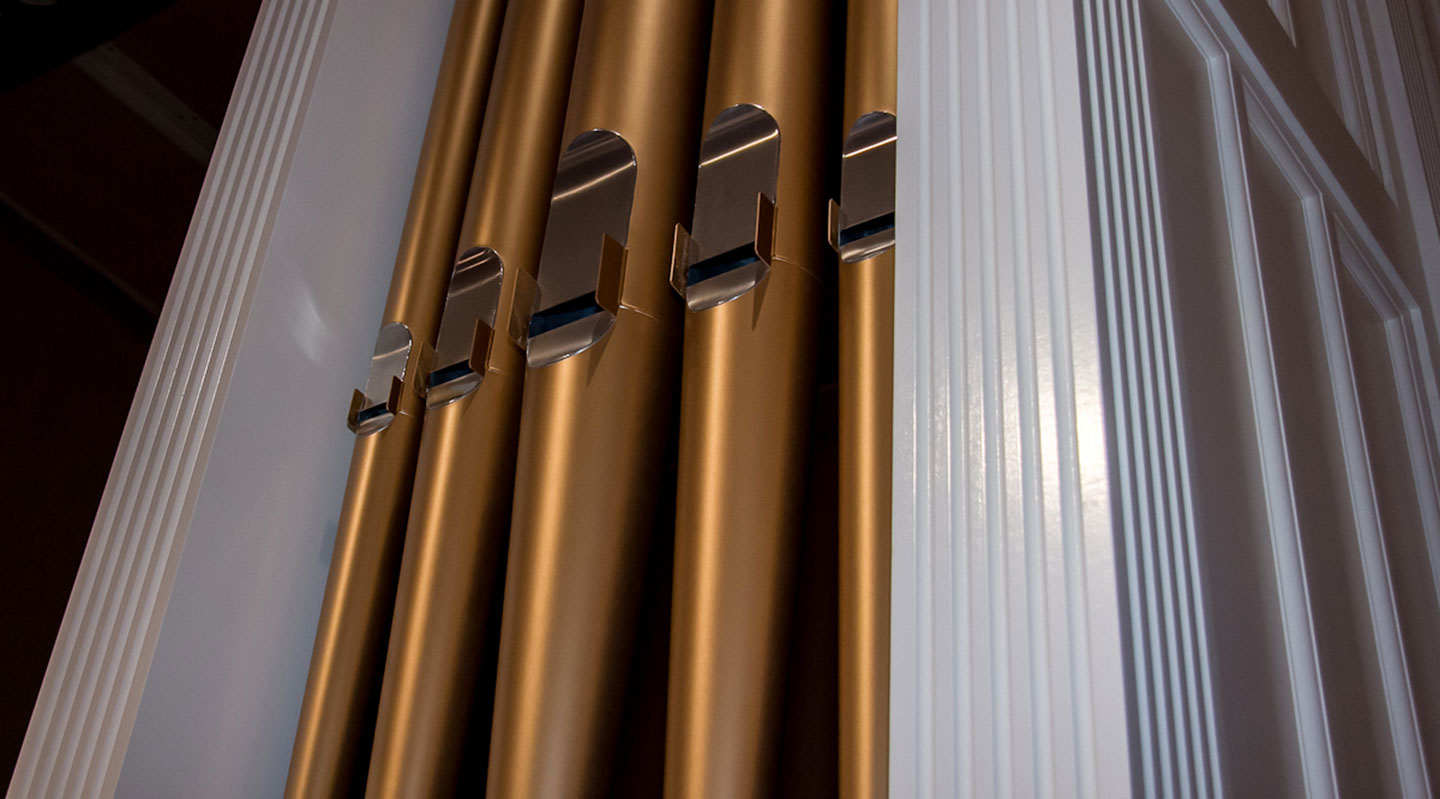Glossary of Pipe Organ Terms
While researching your prospective new Pipe Organ, you will be hearing and reading a lot about these instruments. Even though we try avoiding unnecessary jargon, some terms are helpful in understanding the instrument. This glossary might help you to wind your way through the maze of information you are about to enter. Please keep this list for your reference.
Action
The mechanical connection between keys and pipes. As with anything, some moving parts will wear out.
Combination Action
A device for turning on or off several stops at once. Air operated combination actions can expect a limited life span in most organs.
Console
This holds the keyboards and stop controls for an organ. It is the control center for the instrument.
Division
A self-contained part of the organ consisting of its own windchest, pipes, and keyboard.
Manual
A keyboard played by the hands. The average manual or keyboard in the U.S. has 61 keys.
Organ
A collection of pipes. The organ is NOT the console! The console controls the organ.
Organ Case
he wooden housing around the entire organ or around one or more divisions of the organ. Cases are often beautifully designed and carved to add visual beauty to the Nave.
Pedalboard
An organ keyboard of between 30–32, beginning at Low C and played by the feet.
Pipe
A whistle. Like a flute or a clarinet, organ pipes are long structures, which control vibrating columns of wind. The pipe’s length, shape, proportions, materials, wind pressure, and placement affect its ability to control wind.
Rank
A set of pipes, one for each note on the manual (61 pipes) or pedalboard (32 pipes).
Stop
A group of pipes or voice, which can be made to sound or be silenced by moving the stop knob to an on or off position. Often, more than one rank is controlled by a stop, meaning that more than one pipe will sound when a key is depressed.
Swell Box
An enclosure, usually wooden, around a windchest and pipes, with louvers similar to venetian blinds at the front, which can be opened or shut to increase or decrease volume. Please note that a pipe plays at a constant volume. It can’t be louder or softer. Instead, the opening through which we hear it is closed or opened. Hitting an organ key harder will not make the pipe speak louder.
Voicing
The regulation of a pipe’s speech and tone quality. This is done by making delicate adjustments at the mouth (the hole in the whistle) and the foot (where you blow on the whistle) or the pipe, to control the flow of wind inside the pipe.
Windchest
A box (literally a chest) of wood, with airtight joints, having holes bored in its top, over which rest the pipes of the organ. Each division of the organ has its own separate windchest.
**Please note that Pipe Organs are totally handmade. There is no way for short cuts to be taken. There is only good workmanship or shoddy workmanship when building a Pipe Organ.

